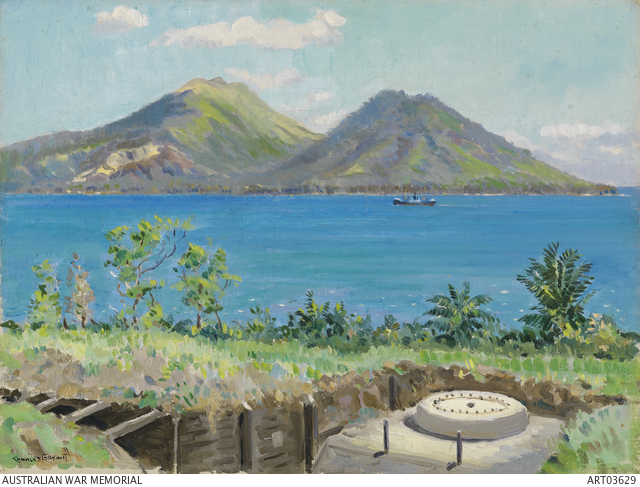First action
At the outbreak of war the Royal Australian Navy (RAN) came under the control of the British Admiralty. Its first task was to protect Australia’s ports, shipping, and trade routes. The Australian Naval and Military Expeditionary Force (AN&MEF) was quickly raised to seize German New Guinea and the New Britain Archipelago. On 11 September 1914 the force landed at Blanche Bay, Rabaul. When they encountered resistance from the German forces, seven Australians were killed and four wounded – Australia’s first casualties of the war.
After the seizure of New Guinea, the RAN began the vital role of convoy escort. The first convoy of Australian and New Zealand troops departed from Albany, Western Australia, on 1 November 1914. Just over a week later, the convoy intercepted a message between the German raider SMS Emden and its collier. HMAS Sydney left the convoy and engaged the Emden in a brief but bloody action that left Emden beached on a coral reef.
HMAS Sydney spent the remainder of the war patrolling the Pacific off the coast of the Americas, and later the Atlantic.
”We have now taken Rabaul and Herbertshoe”
Rear Admiral George Patey, the first commander of the Australian Fleet, was in charge of naval operations during the seizure of German New Guinea. On 11 September 1914, he wrote to his sister, from his flagship, the battle-cruiser HMAS Australia, describing the capture of Rabaul and Herbertshöhe.
Victory signal
The wireless telegraph signal log from HMAS Sydney tersely records the German raider’s fate: “Emden beached and done for”.
“Still alive”
A week after the action, Stoker Niels Nielsen of HMAS Sydney wrote to his family from Colombo to let them know he was “still alive and kicking in spite of the Emden”.
The RAN’s two submarines, the AE1 and AE2, had accompanied the AN&MEF to Rabaul. On 14 September 1914 the AE1 left Rabaul harbour to patrol and never returned. It has been presumed that AE1 struck an uncharted reef and sank. A02603



